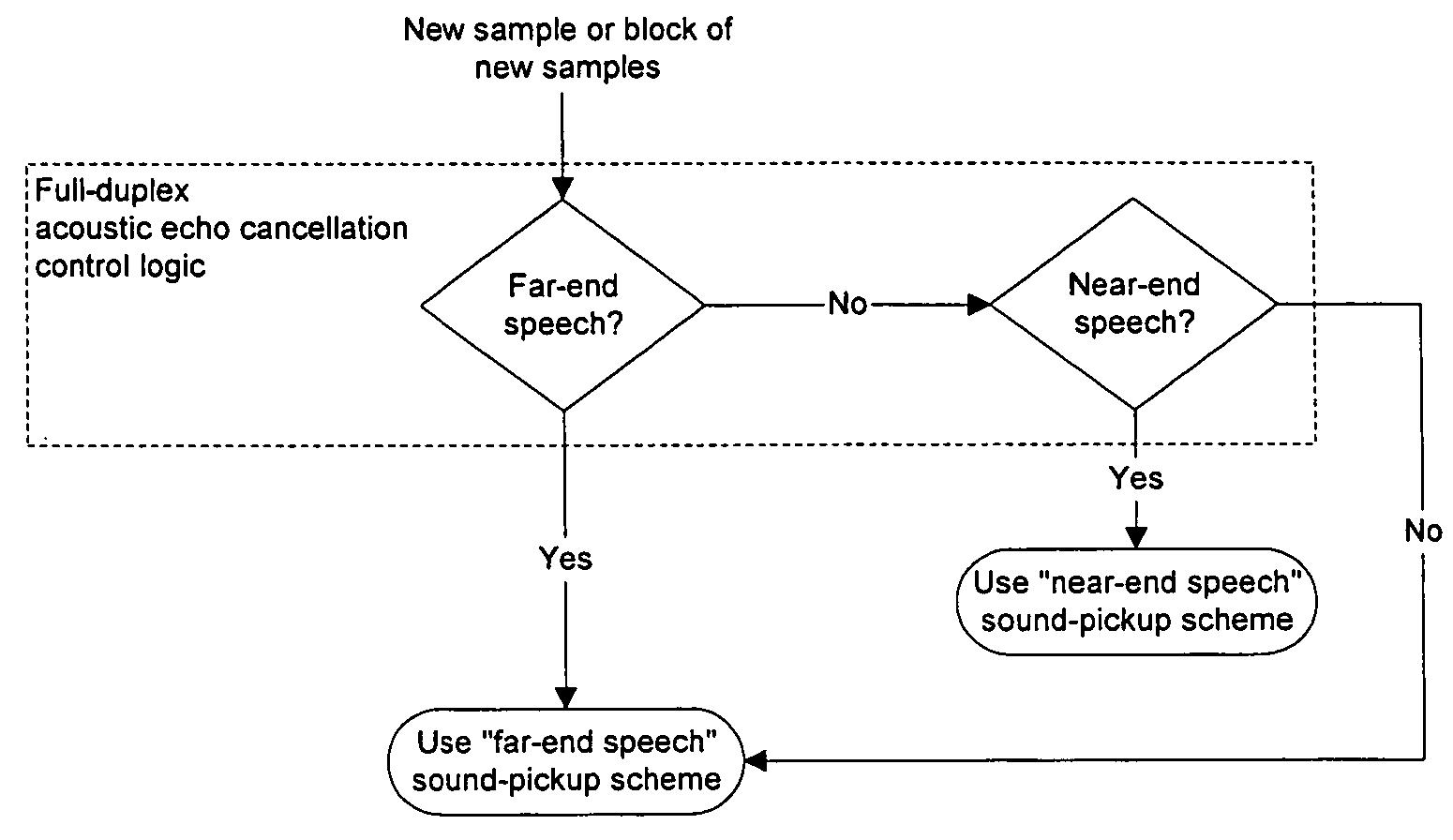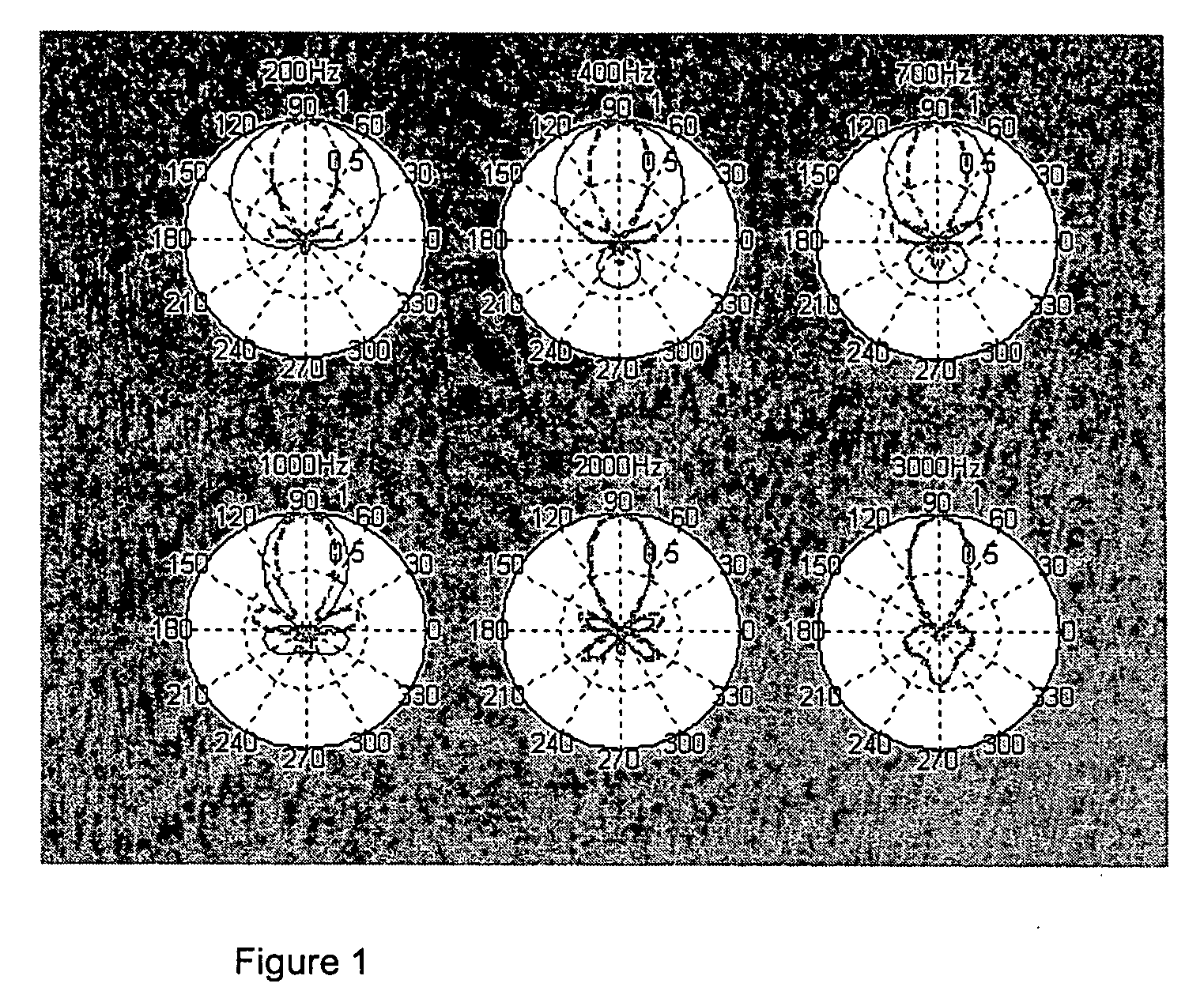Method to reduce acoustic coupling in audio conferencing systems
a technology of audio conferencing and coupling, applied in the field of audio conferencing systems, can solve the problems of reducing the performance of loudspeaker-to-beam coupling when required, full-duplex conferencing system, etc., and achieves enhanced full-duplex operation, reduced loudspeaker feedback, and enhanced near-end speech quality.
- Summary
- Abstract
- Description
- Claims
- Application Information
AI Technical Summary
Benefits of technology
Problems solved by technology
Method used
Image
Examples
Embodiment Construction
[0021]FIG. 5 is a flowchart of the method steps according to the present invention. Upon receipt of a new sample or block of samples, the full-duplex acoustic echo cancellation control logic detects between near-end speech and far-end speech and outputs the results of its detection (i.e. far-end speech detected, near-end speech detected or near-end speech not detected). In the event that far-end speech is detected, the far-end speech sound-pickup scheme is used. That is, a beamformer is switched in to process the signal samples with good coupling characteristics for far-end-speech, double-silence and double-talk. In the event that near-end speech is detected, the near-end speech sound-pickup scheme is used. That is, a beamformer is switched in to process the signal samples with good directivity towards the near-end speaker. Similarly, if neither far-end nor near-end speech is detected, then the far-end speech sound-pickup scheme is used. As mentioned above, an alternative implementa...
PUM
 Login to View More
Login to View More Abstract
Description
Claims
Application Information
 Login to View More
Login to View More - R&D
- Intellectual Property
- Life Sciences
- Materials
- Tech Scout
- Unparalleled Data Quality
- Higher Quality Content
- 60% Fewer Hallucinations
Browse by: Latest US Patents, China's latest patents, Technical Efficacy Thesaurus, Application Domain, Technology Topic, Popular Technical Reports.
© 2025 PatSnap. All rights reserved.Legal|Privacy policy|Modern Slavery Act Transparency Statement|Sitemap|About US| Contact US: help@patsnap.com



